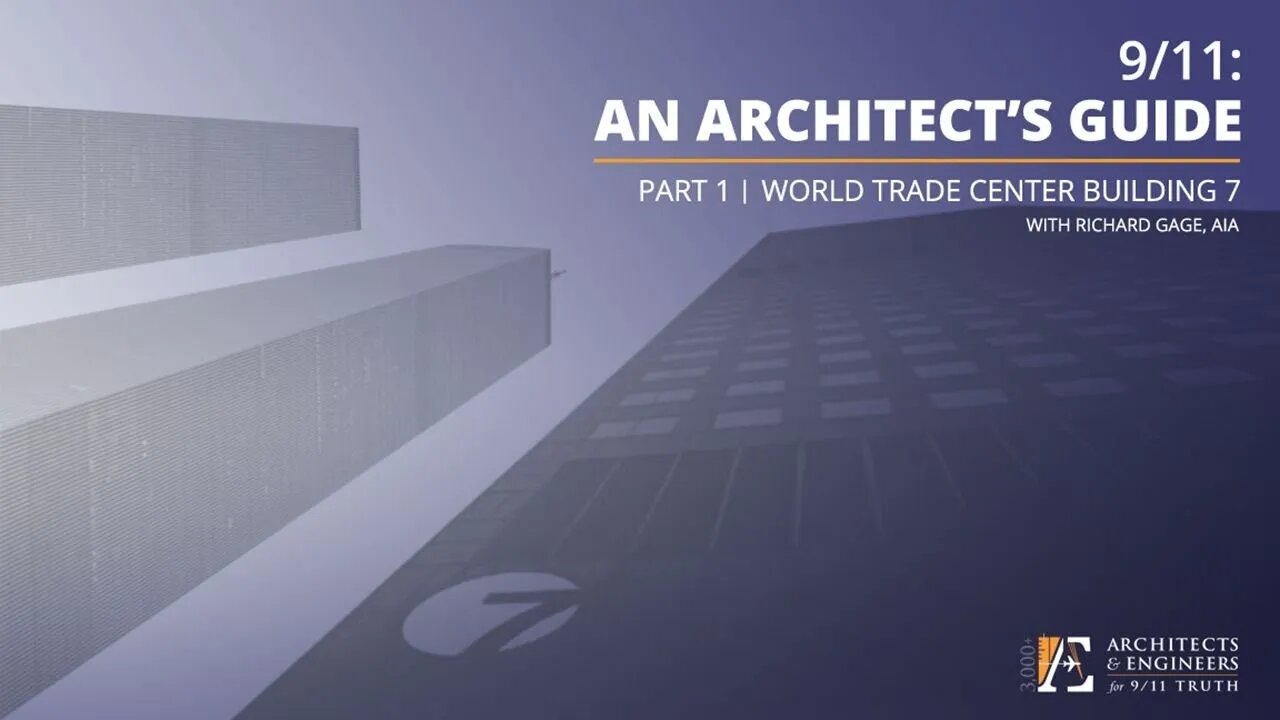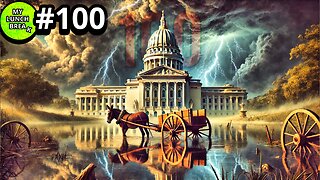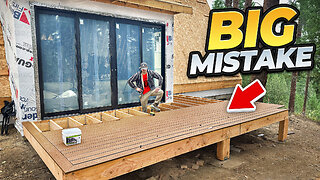Premium Only Content

9/11: An Architect's Guide | Part 1: World Trade Center 7 (11/7/19 webinar - R Gage)
9/11: An Architect’s Guide | Part 1 - World Trade Center 7
Course Number: AE911-AAG-OD1
Live three-part webinar series. Each part is about 1 1/2 hours long
Architects & Engineers for 9/11 Truth is a 501(c)(3) nonprofit organization dedicated to conducting research and providing education about the complete destruction of the three World Trade Center skyscrapers, our courses provide the technical knowledge and analytical framework with which to evaluate the most likely cause of those building failures.
Course Description:
In Part 1 of “9/11: An Architect’s Guide,” Richard Gage, AIA, provides an overview of the most important evidence regarding the destruction of World Trade Center Building 7 (WTC 7), a 47-story high-rise that was not struck by an airplane.
The damage WTC 7 suffered from the collapse of the North Tower was found to be inconsequential. It had fires that were similar to those that have occurred previously in high-rise buildings. Yet it fell symmetrically into its own footprint in the manner of a typical controlled demolition.
In 2008, the National Institute of Standards and Technology (NIST) concluded that WTC 7’s destruction was caused by normal office fires that burned “at temperatures hundreds of degrees below those typically considered in design practice for establishing structural fire resistance ratings.”
Is NIST’s explanation for this unprecedented structural failure valid? Decide for yourself after watching this informative one-hour presentation. Using the information presented, you will be able to evaluate which of the two hypotheses — fire-induced failure or controlled demolition — is more consistent with the evidence.
Learning Objectives:
Participants will be able to:
1. Describe the characteristics of building fires and the aspects of high-rise design that contribute to make fire-induced failure in steel-framed high-rise buildings a rare occurrence.
2. Recognize the distinct features associated with fire-induced failure and the distinct features associated with the procedure of controlled demolition.
3. Describe step-by-step the series of structural failures that the National Institute of Standards and Technology found to be the most likely cause of the collapse of World Trade Center Building 7.
4. Analyze the physical evidence and dynamics of Building 7’s collapse according to how consistent they are with the competing hypotheses of fire-induced failure and controlled demolition.
For more information: visit http://AE911Truth.org
and http://WTC7Evaluation.org
-
 1:04:26
1:04:26
Architects & Engineers for 9/11 Truth
1 year agoYou're either with US or THEM — 9/11 Truth as a Political Weapon | Fourth Turning? / 911FreeFall
3.21K9 -
 3:59:18
3:59:18
GamerGril
11 hours agoPAGING ALL ZOMBOIZ | DEAD ISLAND 2
74.8K8 -
 42:24
42:24
MYLUNCHBREAK CHANNEL PAGE
18 hours agoA Century Gone
119K57 -
 38:22
38:22
Stephen Gardner
12 hours ago🔥HOLD ON! The RUMORS about Kamala are TRUE...
163K431 -
 1:22:44
1:22:44
Michael Franzese
1 day agoWill Trump’s Win Finally Convince Democrats to Stop The Woke Nonsense??
155K117 -
 8:27:07
8:27:07
MDGgamin
15 hours ago🔴LIVE- Rumble Gaming To The MOON - Variety of Games & Chatting - #RumbleTakeover
136K5 -
 27:24
27:24
Mr. Build It
5 days agoDECK DISASTER! How We Fixed a Botched Build
105K15 -
 26:58
26:58
barstoolsports
16 hours agoZach Bryan Blocks All of Barstool | Stool Scenes
117K16 -
 1:06:44
1:06:44
Talk Nerdy 2 Us
1 day ago🔥 Hackers vs. The World: From Amazon breaches to FBI-confirmed Chinese telecom spying
108K22 -
 1:24:20
1:24:20
Vigilant News Network
1 day agoJoe Rogan Drops Shocking Election Claim | The Daily Dose
170K179